An iconic summertime species and a popular target for anglers ashore and afloat. The humble mackerel is a welcome catch for both eating and for bait, and on light gear provide excellent sport. When present, this schooling pelagic fish can be plentiful and an easy catch. Here are some tips on how to catch them from your kayak …
Scomber scombrus – the Atlantic mackerel
The Atlantic mackerel is an abundant baitfish around the coast of the UK and becomes a popular target during the warmer months when these fish move inshore to feed on plankton and chase smaller baitfish such as sand-eels. They are great fun to catch too, and if caught on well-balanced light gear they will certainly put up a great fight! Mackerel are members of the tuna family and these fish are built for speed. They have a streamlined torpedo shaped body packed full of muscle which drives it’s stiff tail fin, side to side, at great speed. They are quite beautiful too. A shimmering silverly-white underside turns to a green and blue topside broken with wavy black lines. Fresh from the water they look awesome!
Mackerel are a relatively easy target for the kayak angler and you really don’t need a lot of gear to catch some fresh mackerel for your tea!
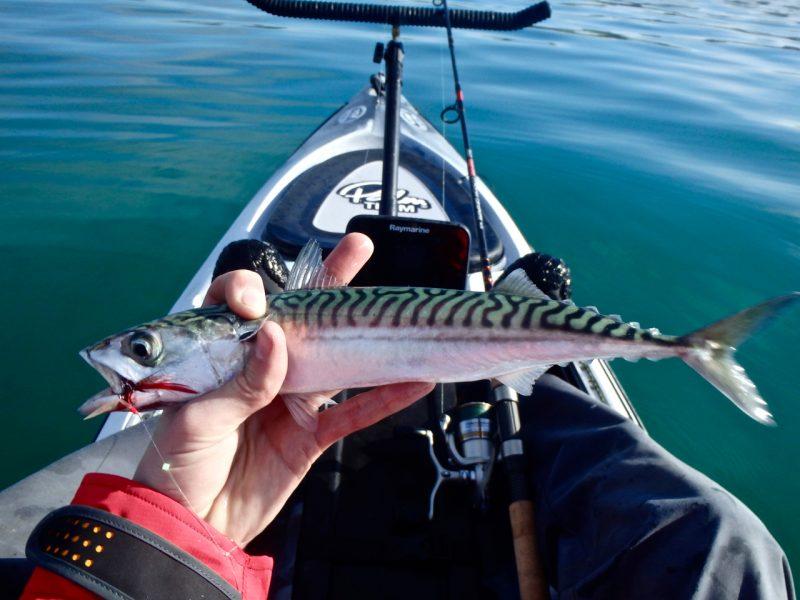
Mackerel are great fun to catch from your kayak
Where to find mackerel?
Mackerel are a pelagic schooling fish, this means that they like to swim in groups, often thousands of fish in size, in the water column and don’t tend to hold position over a specific area for very long. That being said, mackerel can at times be hard to find and sometimes it’s just hit and miss whether they are present where you are fishing. Hit it right and you could find yourself on top of a huge school. They like to stay on the move and for good reason – their food also likes to stay on the move. The pelagic environment is a fairly hostile place if you’re a bait-fish. There is always something bigger waiting to chase you and eat you!
I like to look for areas where there will be some tidal flow. On rocky coastlines it is worth fishing around headlands and around reefs. These features cause interference to the water flow, which in turn will help to congregate food items and therefore attract hungry fish such as mackerel. On featureless coastlines of clean ground the fish may turn up anywhere but look for areas of deeper water if possible. The areas around piers and harbours tend to attract mackerel and are well worth fishing near. Mackerel will sometimes venture into saltwater estuaries and the entrances to these can often hold schools of mackerel. You often don’t have to paddle too far to find the fish. The best thing to do is to get out there and give it a go!
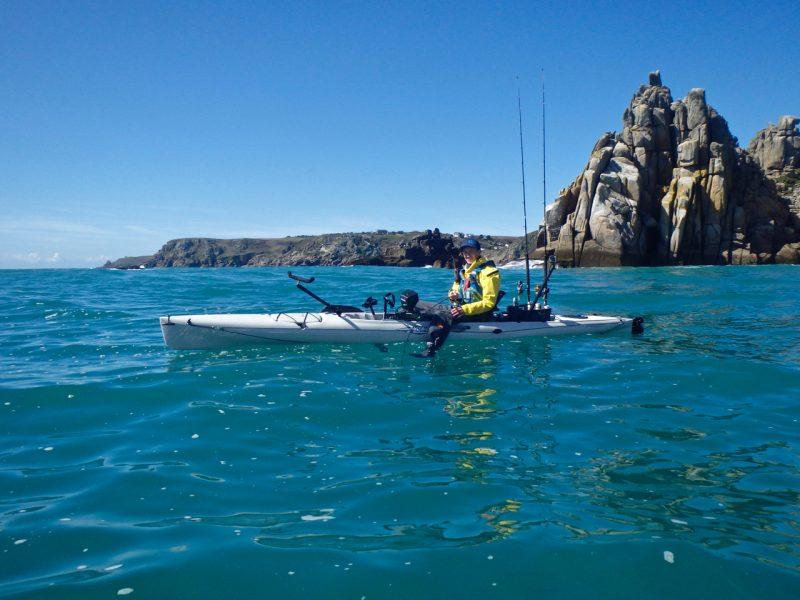
Headlands tend to be productive areas for catching mackerel
Mackerel will swim at pretty much every depth in the water column. I have caught them just under the surface and I have caught them at 300 ft down on the bottom! They could be anywhere and it is very much trial and error when it comes to locating them. I tend to start fishing at half depth and then try shallower or deeper if they aren’t biting until I find some. There is one tool that can help here though – a fish finder! Using a fish finder allows you to make an informed decision on when to drop your rig down into the water. Simply paddle around until you locate a school of fish in the water column. You’ll then be able to see exactly what depth the fish are swimming at and drop your rig right into them. Mackerel often show up on the screen as a dense block of fish. If your fish finder has down imaging capability then you may even be able to see the individual fish as small dots or dashes as in the image below.

A school of mackerel in the water column shown on the fish finder
How to catch mackerel from your kayak
There is no need for finesse or complicated rigs when fishing for mackerel. Nor is there any need for any specific rods and reels. For the best sport, choose a light spinning rod or lure rod and match it up with a small fixed spool reel. Use 15 lb monofilament line or better still 15 lb braid. Then it is a case of tying on your rig or lure. Heavier gear can be used but you will not feel so much of the fight.
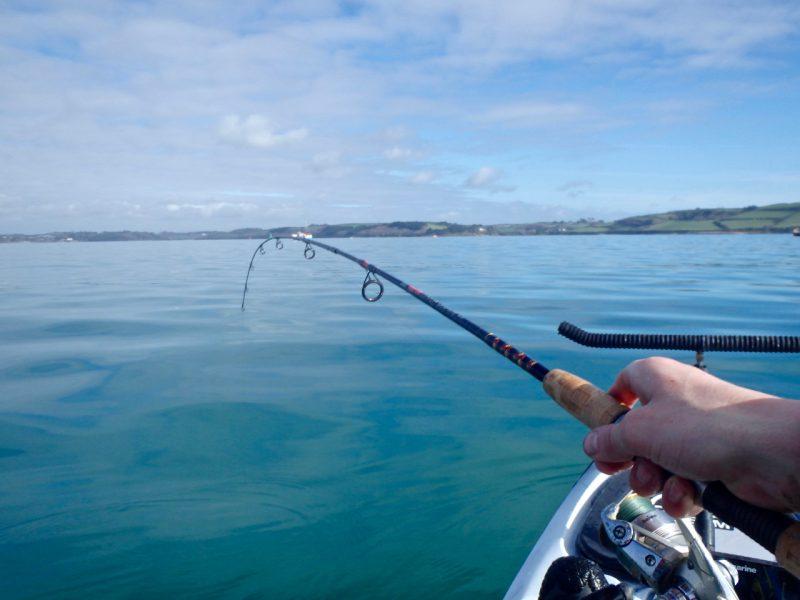
A light rod and reel setup is all that is needed to catch Mackerel from the kayak
Mackerel are fairly ferocious predators, especially when in a school. Put anything that loosely resembles a shiny baitfish amongst them and they will most likely attack it within seconds! That being said, there are many ways to catch mackerel but the most effective way to catch them is to use some type of multi-hook attractor rig. These come in various pre-tied designs available from just about every tackle shop which stocks sea fishing tackle. The hooks are often dressed with some form of shiny or coloured material to mimic a small bait fish. There are numerous feather rigs, tinsel rigs, sabiki rigs, hokkai rigs and more available which are effective for mackerel. I favour tinsels, feathered sabikis and luminous hokkais. I tend to choose rigs with hook sizes ranging from size 4 up to a size 2/0. The rigs tend to be pre-tied with four or five hooks, sometimes more. I like to cut the rigs down to have three hooks. This causes less problems on the kayak when it comes to unhooking the fish. Five or six lively mackerel onboard can soon become a big tangle with hooks ending up in your clothing or legs! The more hooks on the rig, the less sport the fish provide as they just turn into a big weight with the fish all swimming in different directions. Keep it to three hooks and you’ll still get some sport and still catch plenty.
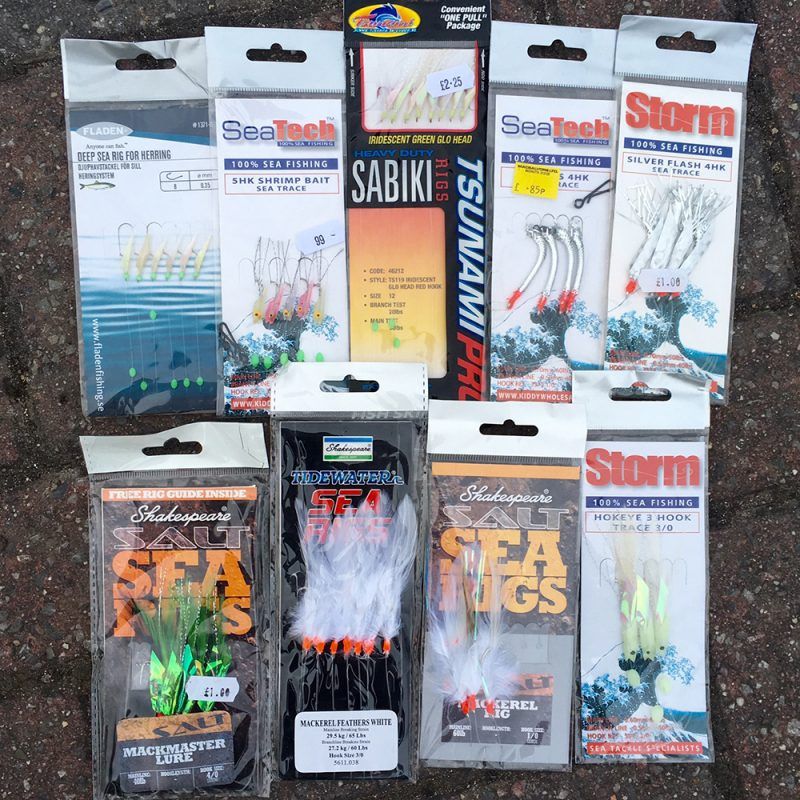
A selection of rigs which are great for targeting Mackerel
These rigs can be worked vertically below the kayak or cast and retrieved. A tried and tested technique to work these rigs is known as ‘whiffing’. This is where the rod tip is raised several feet and then lowered several feet to work the rig through the water and thus giving life to the attractor hooks in the hope of catching the attention of nearby fish. This action can be performed whilst retrieving the rig after a cast – raise rod tip, then wind down a few turns, and repeat until the rig arrives back at the kayak, then cast again, this works well in shallower water with light weights, or when the fish are near the surface. Whiffing can also be performed whilst keeping the rig at the same depth vertically below the kayak – this works well when you know what depth the fish are at, and for when you’re in deeper water and using heavier weights.
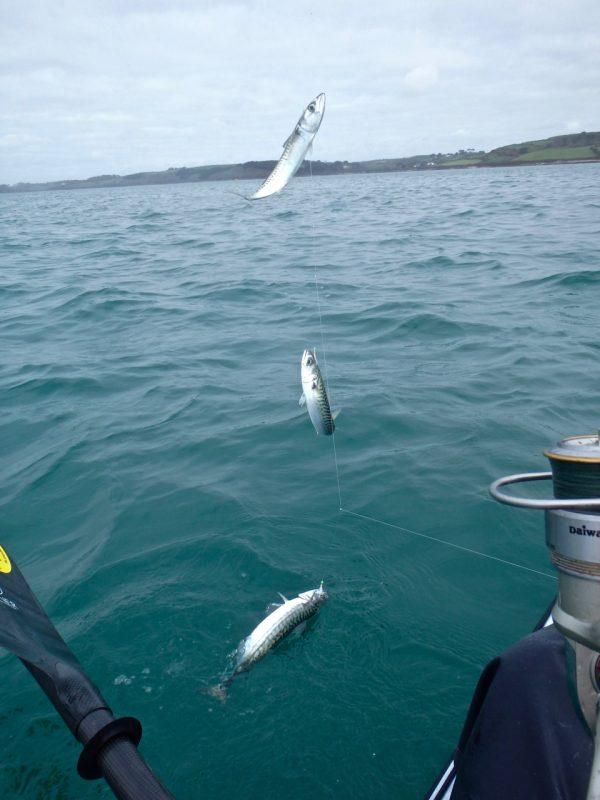
Whilst attractor rigs are the most effective way to catch mackerel, they aren’t the most sporting and fun way to catch them. For that you’ll want to hook just a single fish. You’ll be surprised how well a single mackerel will fight and you can get the most fun by going really light with your gear. Use a 7-28 g rated lure rod and a small fixed spool with 8 lb or 10 lb braid. Make sure you set your clutch as the fish will take line during the fight. The best way to target individual fish is to use a single lure. I favour using small metal lures between 10 g and 25 g such as dexter wedges, toby’s and my favourite the Zebco Slim Jim Eel. These cast well and can be jigged through the water until a Mackerel nails it. Then the fun begins!
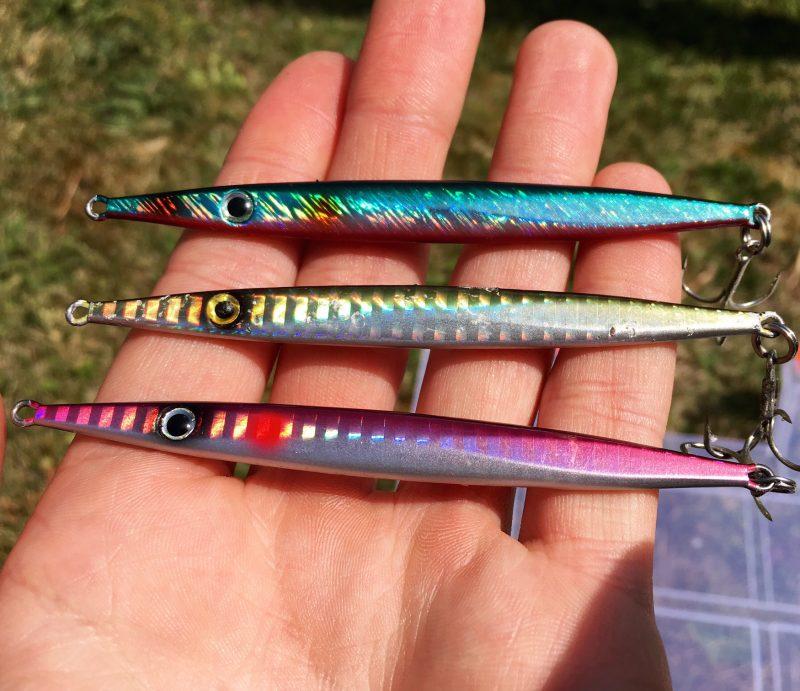
Small metal lures work well for catching mackerel
Small soft plastic lures also work well. Mackerel will nail these in the top 20 ft or so of water. Effective lures include the Fiiish Black Minnow 70, Savage Gear Sandeels in the mini 10 cm or small 12.5 cm sizes and many others that imitate small baitfish such as sandeels and sprats.
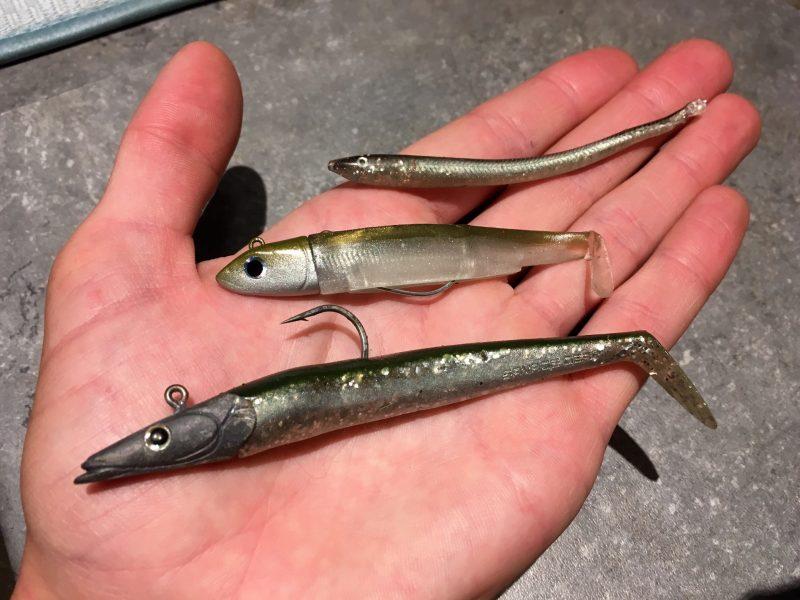
A selection of soft plastic baitfish imitation lures which are effective for catching mackerel
Whatever way you decide to catch them, a good bit of mackerel fishing will be sure to put a smile on your face. When present, they are one of the easiest fish to catch and are a realistic target for just about every saltwater kayak angler in the UK during the summer months. They make great eating and are a great bait for other species. So, what are you waiting for? Go get em!